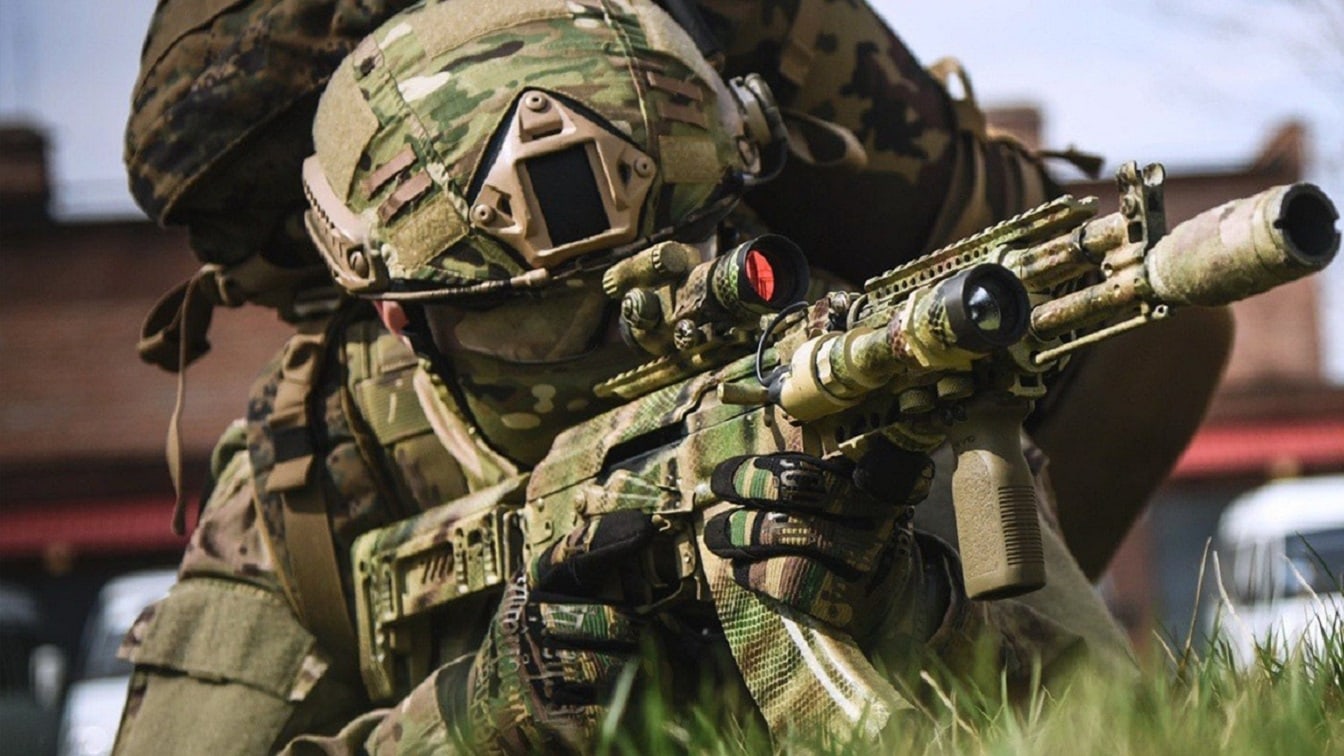Three months into the war in Ukraine and the poor capabilities of the Russian military continue to be exposed for the world to see. Elite units, such as the Spetsnaz special forces and the airborne forces, known as the VDV, have suffered severe credibility hits over their performance in Ukraine.
Russian Airborne Forces in Ukraine
In its daily update on the war, the British Ministry of Defense focused on the Russian airborne forces and their performance in Ukraine thus far.
“Russia’s airborne forces – the VDV – have been heavily involved in several notable tactical failures since the start of Russia’s invasion. This includes the attempted advance on Kyiv via Hostomel Airfield in March, the stalled progress on the Izium axis since April, and the recent failed and costly crossings of the Siverskyi Donets River,” the British Military Intelligence stated.
“Russian doctrine anticipates assigning the VDV to some of the most demanding operations. The 45,000-strong VDV is mostly comprised of professional contract soldiers. Its members enjoy elite status and attract additional pay,” the British Ministry of Defense added.
The Russian high command has deployed the VDV as shock troops, giving them the hardest missions to open and pave the way for the conventional Russian forces. But the VDV weren’t designed to be used as mechanized infantry, resulting in heavy casualties. Losing so many elite formations is sure to have an adverse effect on Russia’s longterm military capability.
“The VDV has been employed on missions better suited to heavier armoured infantry and has sustained heavy casualties during the campaign. Its mixed performance likely reflects a strategic mismanagement of this capability and Russia’s failure to secure air superiority,” the British Military Intelligence added.
“The misemployment of the VDV in Ukraine highlights how Putin’s significant investment in the armed forces over the last 15 years has resulted in an unbalanced overall force. The failure to anticipate Ukrainian resistance and the subsequent complacency of Russian commanders has led to significant losses across many of Russia’s more elite units,” the British Ministry of Defense stated.
The Russian VDV Airborne Forces
The VDV makes up a distinct branch of the Russian military and is used as its strategic reserve. VDV forces are usually the first to be deployed to respond in a contingency.
A modernization that began in 2015 sought to bring the strength of the VDV to about 60,000 troops, but that goal was never achieved, and before the invasion began, the VDV could sport about 45,000 troops.
The VDV are broken down into several divisions and brigades and deploy on the ground as battalion tactical groups, much like the rest of the Russian military. But VDV battalion tactical groups don’t really comply with the notion of “airborne” that exists in the West.
VDV battalion tactical groups contain tanks, armored personnel carriers, and infantry fighting vehicles, which would normally make one think that they are mechanized infantry or an armor unit.
1945’s New Defense and National Security Columnist, Stavros Atlamazoglou is a seasoned defense journalist specializing in special operations, a Hellenic Army veteran (national service with the 575th Marine Battalion and Army HQ), and a Johns Hopkins University graduate. His work has been featured in Business Insider, Sandboxx, and SOFREP.

